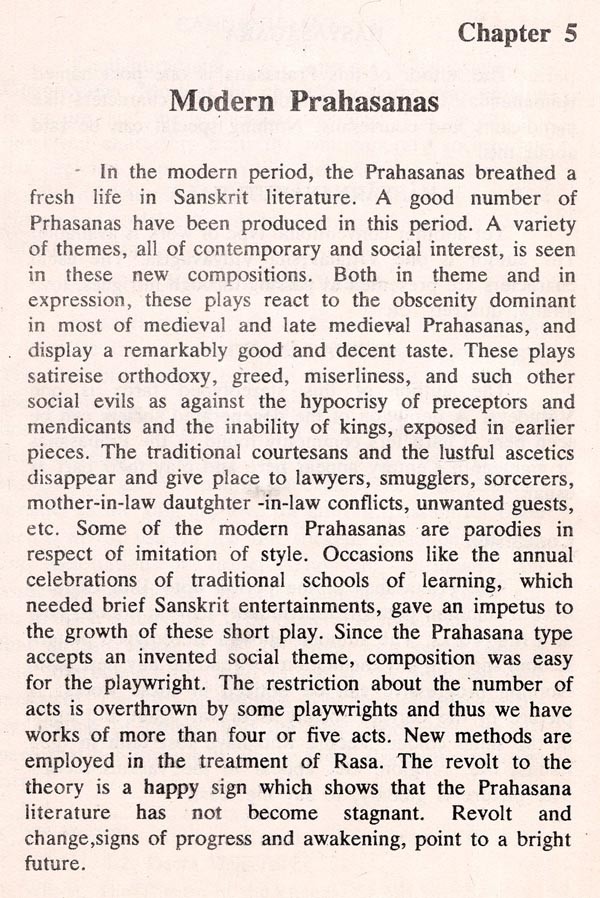
Prahasanas in Sanskrit Literature and Kerala Stage
Book Specification
| Item Code: | AZE405 |
| Author: | K.K. Malathi |
| Publisher: | NAG PUBLISHERS |
| Language: | ENGLISH |
| Edition: | 1995 |
| ISBN: | 8170812992 |
| Pages: | 200 |
| Cover: | HARDCOVER |
| Other Details | 9.00x6.00 |
| Weight | 230 gm |
Book Description
Though Bharata and other theorists have defined and classified Prahasanas we meet with the early types only at a later date. Mattavilasa of Pallava king Mahendravikramavarman and Bhagavadajjuka assigned to the authorship of Bodhayanakavi are among the earliest extant farces.
The present monograph by Dr. K.K.Malathi Devi examines critically more than one hundred and sixty Prahasanas in Sanskrit for the convenience of the treatment. She has classified them into four groups, viz (1) the early Prahasanas (before 10th century A.D.) where we meets with real humour and decency of subject matter; (2) the medieval Prahasanas (from 10th to 15th century) with a remarkable deterioration in the theme and tone; (3) the later Prahasanas (from 15th to 19th century A.D.) most of which are pure vulgar with a high degree of obscurity, and (4) the modern Prahasanas (19th to 20th century A.D.) with a reformed and dignified social themes. The works pertaining to each of these groups are taken up individually for critical examination.
The present monograph consists of an examination of more than one hundred and sixty Prahasanas, published as well as unpublished. The work is divided into seven chapters. The first chapter discusses the Prahasana as a type of rūpaka, its nature and definitions as given by literary critics right from Bharata, its different types, etc.
In the second chapter, the origin and development, their classification into four category according to chronology and the study of four early works are dealt with.
The third chapter is devoted to an examination of medieval works, most of which are only referred to in rhetorical compositions. In the fourth chapter accounts of more than twenty Prahasanas of later origin are given, taking some of the important ones for detailed study. The fifth chapter gives a brief account of nearly one hundred and twenty farces written in the modern period.
In the sixth chapter, the importance of rasa in Sanskrit drama, hasya as a rasa, how it is referred in early, medieval, later and modern Prahasanas are treated. The seventh chapter gives an account of the adaptation of some of the Prahasanas in the Kerala stage. In conclusion, the significance and contribution of the Prahasana type to the cultural and social life of the times are briefly dealt with.
**Contents and Sample Pages**












